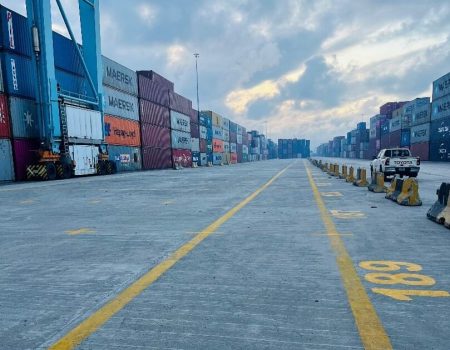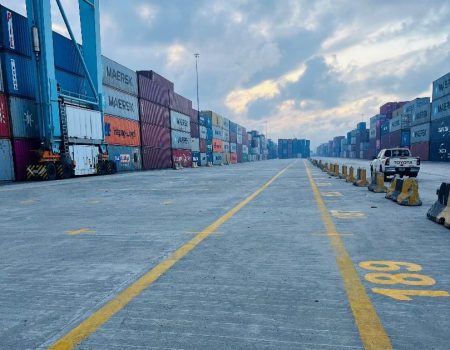Nigeria’s nascent onshore Otakikpo oil terminal, a $400 million investment spearheaded by marginal field operator Green Energy International, has officially commenced export operations, marking a significant milestone in the nation’s oil and gas sector. The terminal’s inaugural crude cargo was loaded by Shell, signaling the operational readiness of this strategically important facility. Situated within the OML 11 block southeast of Port Harcourt, the terminal boasts a substantial export capacity of 360,000 barrels per day (bpd), a testament to its potential to significantly impact Nigeria’s crude oil output. This infrastructural advancement replaces a previously employed and cost-intensive barging system, which incurred daily expenses of approximately $120,000 for production evacuation. The transition to the new terminal is projected to yield significant cost reductions in crude oil production, estimated at a minimum of 40%, offering a more economically viable solution for operators in the region.
The Otakikpo terminal’s operational efficiency stems from its innovative design, featuring a 23-kilometer, 20-inch pipeline connecting onshore production facilities to a single-point mooring (SPM) system in the Atlantic. The SPM’s 21-meter draught accommodates both Aframax and Suezmax tankers, facilitating efficient loading and transport of crude oil to international markets. This streamlined approach not only minimizes logistical complexities but also contributes to the reduction in operational expenditures. By storing crude oil in tanks onshore, the terminal significantly reduces the overall cost per barrel compared to the previous barging system. This cost-effective strategy enhances the competitiveness of Nigerian crude in the global market, potentially attracting further investment and development in the region.
Beyond its immediate impact on Green Energy’s operations, the Otakikpo terminal holds the potential to revitalize the surrounding oil and gas landscape. It provides a crucial export route for over 40 nearby marginal fields, which collectively hold an estimated production capacity of 200,000 bpd and substantial reserves of 3 billion barrels of oil equivalent. This collaborative infrastructure allows smaller operators to access global markets, fostering economic growth and development within the region. The terminal’s capacity to receive up to 250,000 bpd from third-party producers, including via a dedicated 6-inch, 6-kilometer offshore pipeline, underscores its role as a central hub for regional oil production. This collaborative approach not only optimizes resource utilization but also encourages synergistic partnerships within the industry.
Green Energy International has ambitious plans to further enhance the Otakikpo terminal’s capabilities. A key focus is the development of a comprehensive gathering system to streamline the collection of crude oil from other producers in the area. This integrated network will further optimize logistics and reduce operational costs for participating companies. The company also aims to significantly expand the terminal’s storage capacity, targeting an increase from the current 750,000 barrels to as much as 3 million barrels. This strategic expansion will enhance operational flexibility and ensure the terminal can accommodate growing production volumes. Furthermore, Green Energy has demonstrated its responsiveness to market demands by indicating its readiness to add tank storage within nine months if required. This proactive approach positions the terminal to adapt to evolving market conditions and maximize its strategic value.
The commissioning of the Otakikpo terminal marks a significant shift in Nigeria’s oil and gas landscape, offering a compelling alternative to traditional floating storage solutions. The managing director of the Otakikpo Oil Terminal, Kayode Adegbulugbe, emphasized the terminal’s potential as a home-grown solution, advocating for its adoption as a cost-effective alternative to multiple float stations. He highlighted the significant reduction in operational expenditure achieved through onshore tank storage, emphasizing its contribution to lowering the overall cost of production per barrel. This domestically developed infrastructure not only reduces reliance on external resources but also fosters local expertise and technological advancement within the Nigerian oil and gas sector.
The formal commencement of export operations from the Otakikpo terminal, with Shell loading the first cargo onto the Aframax tanker Lipari, signifies a pivotal moment for Green Energy and the broader Nigerian oil industry. While Green Energy’s current crude output averages around 5,000 bpd, they have secured regulatory approval to increase production to 30,000 bpd under a revised field development plan. This planned production ramp-up, coupled with the terminal’s substantial capacity and strategic location, positions the Otakikpo terminal as a significant contributor to Nigeria’s oil production and export capabilities. The terminal’s success serves as a model for future developments, demonstrating the potential of marginal field operators to contribute significantly to the nation’s energy landscape through innovative infrastructure development and collaborative partnerships.














